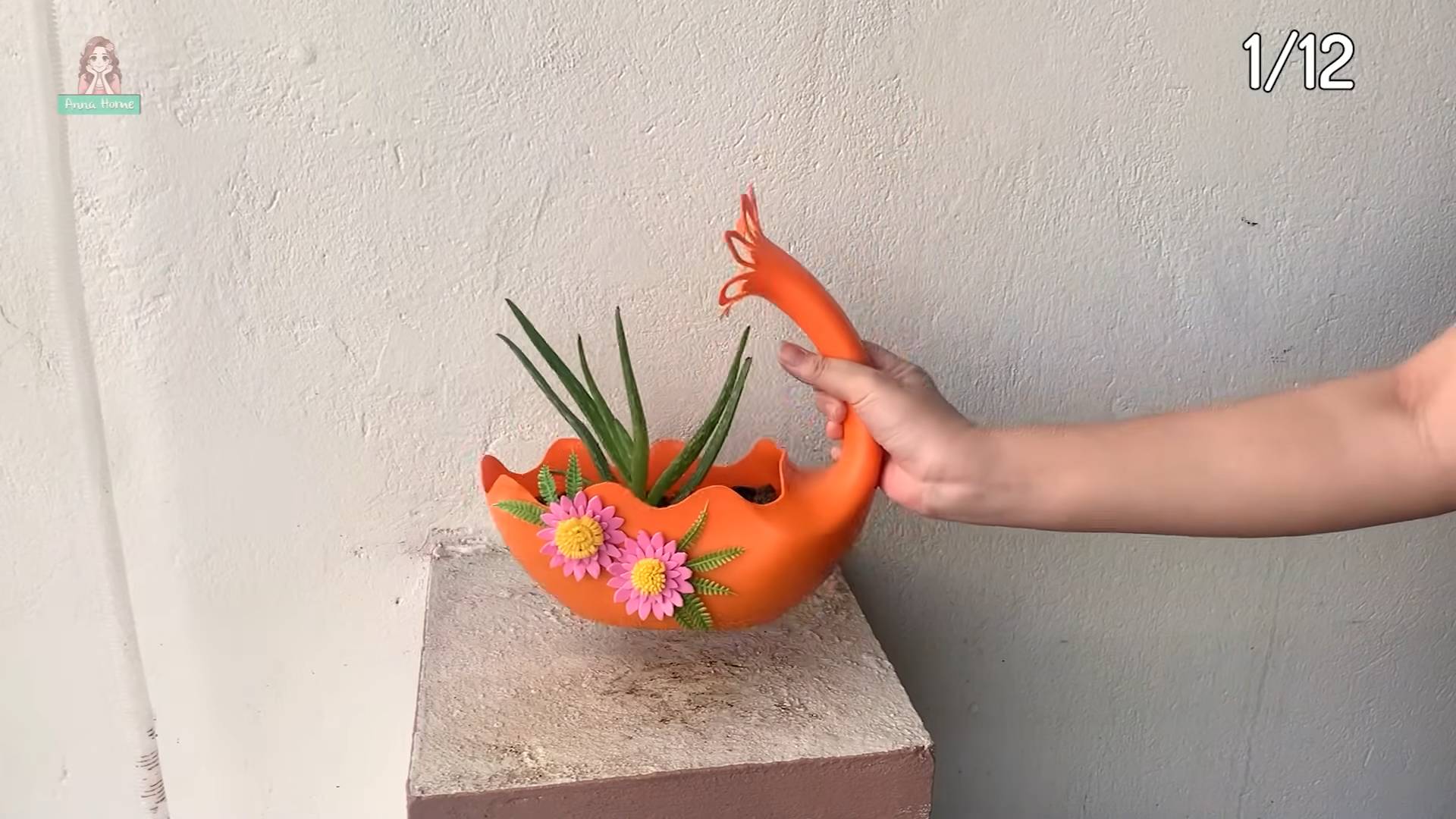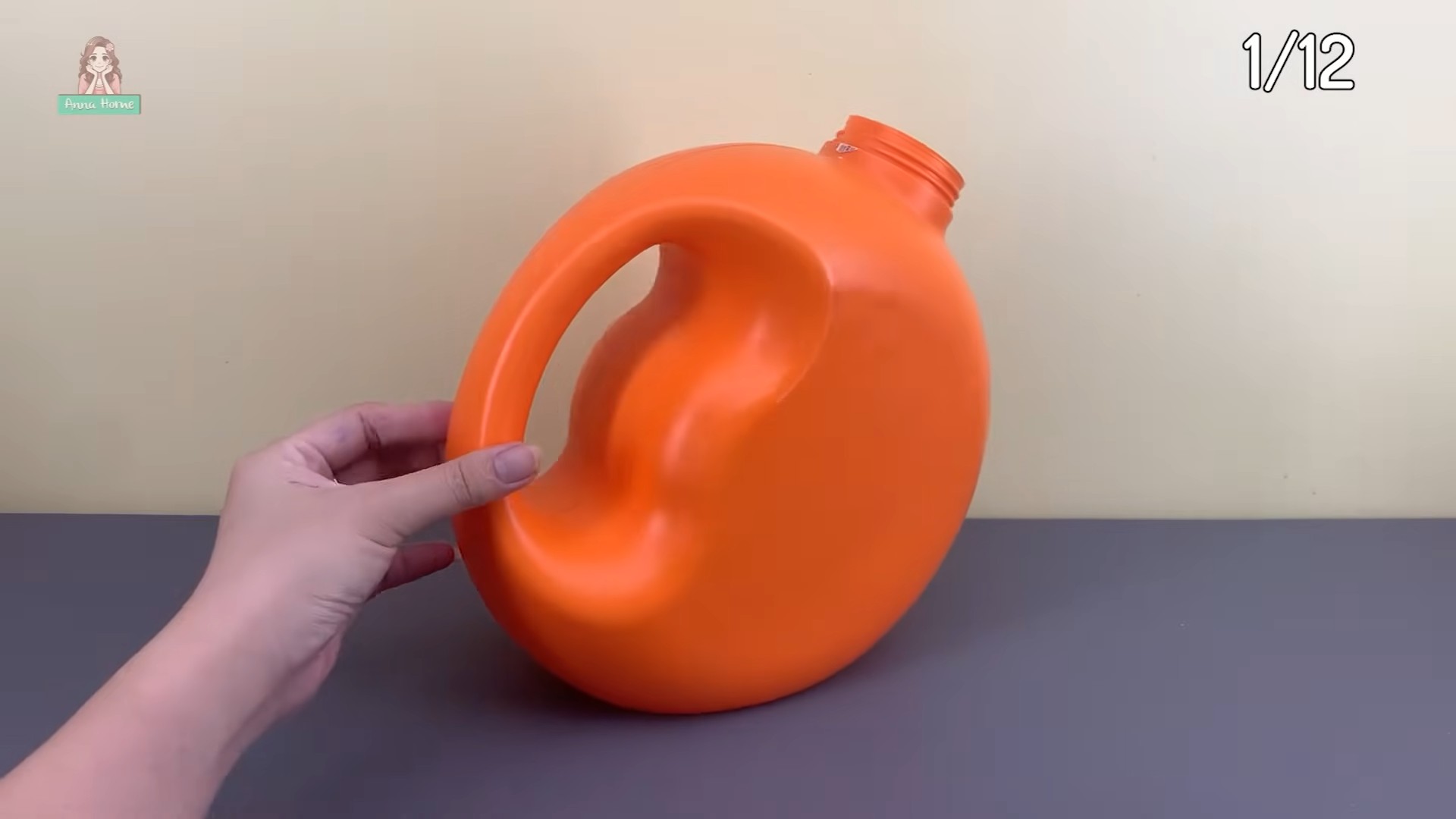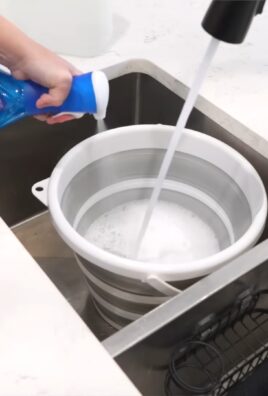Home Hacks That Work are the secret sauce to transforming your living space from ordinary to extraordinary, without breaking the bank! Have you ever looked around your home and thought, “There *has* to be a better way to organize this,” or “I wish I could add a touch of personality without a major renovation”? Well, you’re in the right place. For centuries, resourceful individuals have been developing clever solutions to everyday household challenges. Think of the early settlers who ingeniously repurposed materials to build homes and create functional tools – their ingenuity is the foundation of the home hacking spirit!
In today’s fast-paced world, we’re all looking for ways to simplify our lives and make our homes more comfortable and efficient. That’s where these Home Hacks That Work come in. I’m going to share some of my favorite DIY tricks and tips that will not only save you time and money but also add a unique, personal touch to your home. From clever storage solutions to easy cleaning hacks and creative decor ideas, these projects are designed to be simple, fun, and effective. Get ready to unleash your inner DIY enthusiast and discover how to make your home a haven of comfort and style!

Growing Sweet Potatoes in Soil Bags: A Beginner’s Guide
Hey there, fellow gardening enthusiasts! I’m so excited to share this super easy and rewarding DIY project with you: growing sweet potatoes in soil bags! Forget tilling a huge garden plot; this method is perfect for small spaces, balconies, or even just a sunny patio. Plus, it’s a fantastic way to get a bountiful harvest of delicious sweet potatoes. Let’s get started!
What You’ll Need
Before we dive in, let’s gather our supplies. This is a relatively inexpensive project, and you might already have some of these items on hand.
* Soil Bags: I recommend using heavy-duty polypropylene woven bags. These are strong, durable, and can hold a lot of soil. You can find them at most garden centers or online. Aim for bags that are at least 24 inches tall and 18 inches wide. The bigger, the better, as sweet potatoes need room to grow.
* Sweet Potato Slips: These are sprouted sweet potatoes, and they’re what you’ll plant. You can buy them online or at your local nursery. Make sure they look healthy and vibrant. Alternatively, you can sprout your own sweet potatoes (more on that later!).
* Potting Mix: A good quality potting mix is crucial for healthy sweet potato growth. Look for a mix that’s well-draining and contains plenty of organic matter. I like to use a mix specifically formulated for vegetables.
* Compost: Compost is like gold for your garden! It adds nutrients to the soil, improves drainage, and helps retain moisture. Mix it in with your potting mix for an extra boost.
* Water: Essential for, well, everything!
* Scissors or Utility Knife: For cutting the soil bags.
* Optional: Slow-Release Fertilizer: This isn’t strictly necessary, but it can help ensure your sweet potatoes get all the nutrients they need throughout the growing season. Choose a fertilizer formulated for root vegetables.
* Optional: Mulch: Mulch helps retain moisture, suppress weeds, and regulate soil temperature. Straw, wood chips, or shredded leaves work well.
Preparing the Soil Bags
This is where we transform those empty bags into sweet potato havens!
1. Cut Drainage Holes: This is super important! Sweet potatoes don’t like soggy soil. Use your scissors or utility knife to cut several drainage holes in the bottom of each bag. I usually make about 6-8 holes, spaced evenly apart.
2. Roll Down the Edges: Rolling down the top edges of the bags will make them sturdier and easier to work with. Roll them down a few inches.
3. Mix Your Soil: In a large container or on a tarp, mix your potting mix and compost together. I usually aim for a ratio of about 2 parts potting mix to 1 part compost. If you’re using slow-release fertilizer, mix it in at this stage according to the package directions.
4. Fill the Bags: Now, carefully fill the soil bags with your prepared soil mixture. Leave a few inches of space at the top of the bag. Don’t pack the soil down too tightly; you want it to be loose and well-aerated.
Sprouting Your Own Sweet Potato Slips (Optional)
If you can’t find sweet potato slips at your local nursery, or if you just want to save some money, you can easily sprout your own!
1. Choose a Sweet Potato: Select a healthy, organic sweet potato. Avoid any that are bruised or damaged.
2. Suspend the Sweet Potato: There are a couple of ways to do this. You can use toothpicks to suspend the sweet potato over a jar or glass of water, with the bottom half submerged. Alternatively, you can bury the sweet potato halfway in a container of moist potting mix.
3. Provide Warmth and Light: Place the jar or container in a warm, sunny location.
4. Change the Water Regularly: If you’re using the water method, change the water every few days to prevent mold growth.
5. Wait for Sprouts: It can take several weeks for sprouts to appear. Be patient! Once the sprouts are a few inches long, you can gently twist them off the sweet potato. These are your slips!
6. Root the Slips (Optional but Recommended): Place the slips in a glass of water, making sure the bottom inch or two is submerged. In a few days, they should start to develop roots. This will give them a head start when you plant them in the soil bags.
Planting the Sweet Potato Slips
Alright, the moment we’ve been waiting for! Let’s get those slips in the ground (or, in this case, the soil bags).
1. Water the Soil: Before planting, thoroughly water the soil in the bags. This will help settle the soil and provide moisture for the slips.
2. Make a Hole: Use your finger or a small trowel to make a hole in the soil, about 4-6 inches deep.
3. Plant the Slip: Gently place the sweet potato slip in the hole, making sure the roots are pointing downwards. If you sprouted your own slips and they have roots, be extra careful not to damage them.
4. Cover the Roots: Carefully cover the roots with soil and gently firm the soil around the base of the slip.
5. Space the Slips: If you’re planting multiple slips in one bag, space them about 12-18 inches apart.
6. Water Again: Water the newly planted slips thoroughly.
Caring for Your Sweet Potato Plants
Now that your sweet potato slips are planted, it’s time to provide them with the care they need to thrive.
1. Sunlight: Sweet potatoes need plenty of sunlight, at least 6-8 hours per day. Place your soil bags in a sunny location.
2. Watering: Water your sweet potato plants regularly, especially during hot, dry weather. The soil should be consistently moist, but not soggy. Check the soil moisture by sticking your finger into the soil. If the top inch or two feels dry, it’s time to water.
3. Fertilizing: If you didn’t use slow-release fertilizer, you can fertilize your sweet potato plants every few weeks with a balanced liquid fertilizer. Follow the package directions.
4. Weeding: Keep the soil bags free of weeds. Weeds can compete with your sweet potato plants for nutrients and water.
5. Mulching (Optional): Apply a layer of mulch around the base of the plants to help retain moisture, suppress weeds, and regulate soil temperature.
6. Vine Training (Optional): Sweet potato vines can get quite long and sprawling. If you have limited space, you can train the vines to grow up a trellis or other support. This will also help improve air circulation and prevent disease.
Dealing with Pests and Diseases
Sweet potatoes are generally pretty easy to grow, but they can be susceptible to a few pests and diseases.
* Pests: Common sweet potato pests include aphids, flea beetles, and sweet potato weevils. You can control these pests with insecticidal soap or neem oil.
* Diseases: Common sweet potato diseases include fungal diseases like stem rot and black rot. To prevent these diseases, make sure your soil is well-draining and avoid overwatering. If you notice any signs of disease, remove the affected leaves or plants immediately.
Harvesting Your Sweet Potatoes
The most exciting part! Harvesting your own homegrown sweet potatoes is incredibly rewarding.
1. Timing: Sweet potatoes typically take about 90-120 days to mature. You’ll know they’re ready to harvest when the vines start to turn yellow and die back.
2. Digging: Carefully dig around the base of the plant, being careful not to damage the sweet potatoes. Use a garden fork or trowel to gently lift the sweet potatoes out of the soil.
3. Curing: Curing sweet potatoes is essential for improving their flavor and storage life. To cure sweet potatoes, place them in a warm, humid location (around 80-85 degrees Fahrenheit and 85-90% humidity) for about 7-10 days. You can use a greenhouse, a sunny porch, or even a bathroom with a humidifier.
4. Storing: After curing, store your sweet potatoes in a cool, dry, and dark place. They should last for several months.
Troubleshooting
Sometimes things don’t go exactly as planned. Here are a few common problems you might encounter and how to fix them.
* Yellowing Leaves: This could be a sign of overwatering, underwatering, or nutrient deficiency. Check the soil moisture and adjust your watering accordingly. If you suspect a nutrient deficiency, fertilize your plants with a balanced fertilizer.
* Slow Growth: This could be due to lack of

Conclusion
So, there you have it! These aren’t just any home hacks; they’re game-changers designed to simplify your life, save you money, and maybe even impress your friends. We’ve covered a range of solutions, from decluttering secrets to innovative cleaning methods, all aimed at making your home a more functional and enjoyable space. But the real magic lies in trying them out for yourself.
Why is this DIY approach a must-try? Because it empowers you to take control of your living environment. Instead of relying on expensive store-bought solutions or hiring professionals for every minor inconvenience, you can leverage readily available resources and a little bit of ingenuity to tackle common household challenges. Think of the satisfaction of removing a stubborn stain with a homemade concoction, or the pride of organizing a cluttered space with repurposed materials. It’s not just about saving money; it’s about fostering a sense of self-reliance and creativity.
And the best part? These hacks are incredibly versatile. Feel free to experiment with variations to suit your specific needs and preferences. For example, if you’re using vinegar as a cleaning agent, try infusing it with citrus peels for a more pleasant scent. If you’re repurposing old jars for storage, get creative with labels and decorations to add a personal touch. The possibilities are endless!
We’ve shown you some incredible home hacks that work, but the real test is in the execution. Don’t be afraid to get your hands dirty, to experiment, and to adapt these techniques to your own unique circumstances. We encourage you to choose one or two hacks that resonate with you and give them a try this week. You might be surprised at how much of a difference they can make.
But the journey doesn’t end there! We want to hear about your experiences. Did a particular hack work wonders for you? Did you discover a clever variation that we haven’t mentioned? Share your stories, tips, and photos in the comments section below. Let’s create a community where we can all learn from each other and continue to discover new and innovative ways to make our homes more comfortable, efficient, and enjoyable. Your insights could be invaluable to someone else who’s struggling with the same challenges. So, go ahead, embrace the DIY spirit, and let’s transform our homes, one hack at a time! We are confident that these home hacks that work will become a staple in your household routine.
Frequently Asked Questions (FAQ)
Q: Are these home hacks safe to use around children and pets?
A: Safety is paramount, especially when children and pets are involved. While many of these hacks utilize natural ingredients like vinegar, baking soda, and lemon juice, it’s crucial to exercise caution. Always store cleaning solutions out of reach of children and pets. When using essential oils, be mindful of potential sensitivities or allergies. Some essential oils are toxic to pets, so do your research before using them. If you’re unsure about the safety of a particular hack, it’s always best to err on the side of caution and consult with a professional. For example, when dealing with drain cleaning, ensure proper ventilation and avoid mixing different cleaning agents, as this can create harmful fumes. Always supervise children when they are helping with any of these home hacks that work.
Q: How effective are these DIY solutions compared to store-bought products?
A: The effectiveness of DIY solutions can vary depending on the specific hack and the severity of the problem. In many cases, DIY solutions can be just as effective as store-bought products, and often at a fraction of the cost. For example, a mixture of vinegar and water can be a powerful and eco-friendly cleaner for various surfaces. Baking soda can effectively deodorize carpets and absorb odors in refrigerators. However, for more stubborn stains or complex cleaning tasks, you might need to supplement with a commercial product. The key is to experiment and find what works best for you. Remember that many commercial products contain harsh chemicals that can be harmful to the environment and your health, so opting for DIY solutions can be a healthier and more sustainable choice.
Q: Can these hacks damage my furniture or appliances?
A: It’s essential to test any new cleaning solution or hack on an inconspicuous area before applying it to the entire surface. This will help you ensure that it doesn’t cause any discoloration, damage, or other adverse effects. For example, when cleaning wood furniture, avoid using abrasive cleaners or excessive amounts of water, as this can damage the finish. When cleaning appliances, always unplug them first and avoid getting water inside the electrical components. If you’re unsure about the suitability of a particular hack for a specific surface, consult the manufacturer’s instructions or seek professional advice. Prevention is always better than cure, so take the time to test and research before proceeding.
Q: How can I adapt these hacks to my specific needs and preferences?
A: One of the great things about DIY solutions is that they’re highly customizable. Feel free to experiment with different ingredients, ratios, and techniques to find what works best for you. For example, if you don’t like the smell of vinegar, you can add essential oils or citrus peels to mask the odor. If you have sensitive skin, wear gloves when handling cleaning solutions. If you’re dealing with a particularly stubborn stain, you might need to increase the concentration of the cleaning agent or let it sit for a longer period of time. The key is to be creative and adaptable. Don’t be afraid to try new things and see what works best for your unique situation. Remember, these home hacks that work are a starting point, not a rigid set of rules.
Q: Where can I find the necessary ingredients for these DIY hacks?
A: Most of the ingredients used in these DIY hacks are readily available at your local grocery store or hardware store. Common ingredients include vinegar, baking soda, lemon juice, salt, olive oil, and essential oils. You might also need some basic cleaning supplies like spray bottles, sponges, cloths, and buckets. If you’re looking for more specialized ingredients, such as beeswax for furniture polish or borax for laundry detergent, you might need to visit a health food store or online retailer. The beauty of these hacks is that they often utilize items you already have in your pantry, making them a convenient and cost-effective alternative to store-bought products.
Q: How often should I use these home hacks?
A: The frequency of use will depend on the specific hack and your individual needs. For example, you might want to clean your kitchen counters daily, while you only need to deep clean your bathroom once a week. Some hacks, like using baking soda to deodorize your refrigerator, can be done on a monthly basis. The key is to establish a cleaning routine that works for you and stick to it. Regular maintenance will help prevent dirt and grime from building up, making your cleaning tasks easier and more efficient in the long run. Remember that consistency is key when it comes to maintaining a clean and organized home.
Q: What are some other resources for learning about home hacks and DIY solutions?
A: There are countless resources available online and in print for learning about home hacks and DIY solutions. Websites like Pinterest, YouTube, and various home improvement blogs are great sources of inspiration and information. You can also find helpful tips and tutorials in magazines and books. Don’t be afraid to experiment and try new things. The more you learn, the more confident you’ll become in your ability to tackle any household challenge. And remember, sharing your own experiences and tips with others is a great way to contribute to the DIY community.




Leave a Comment